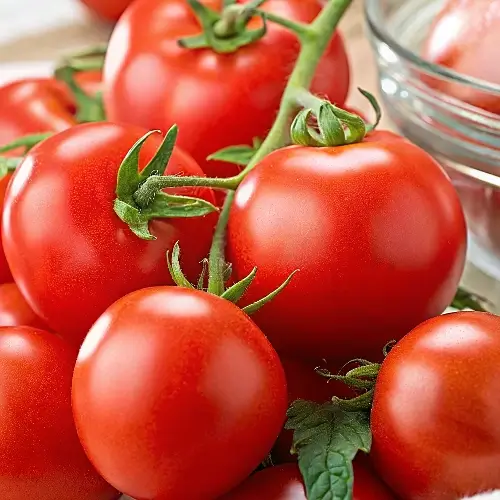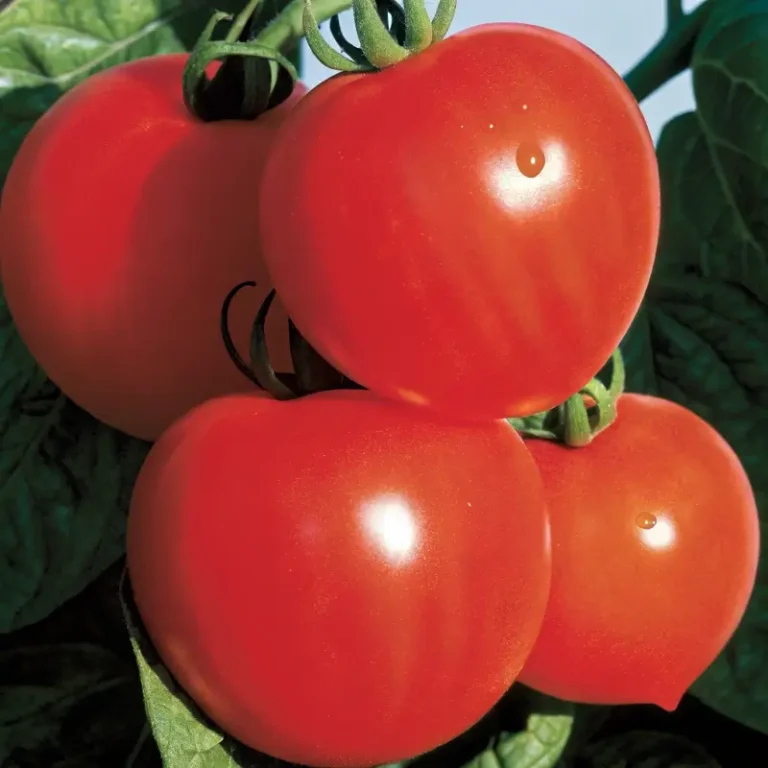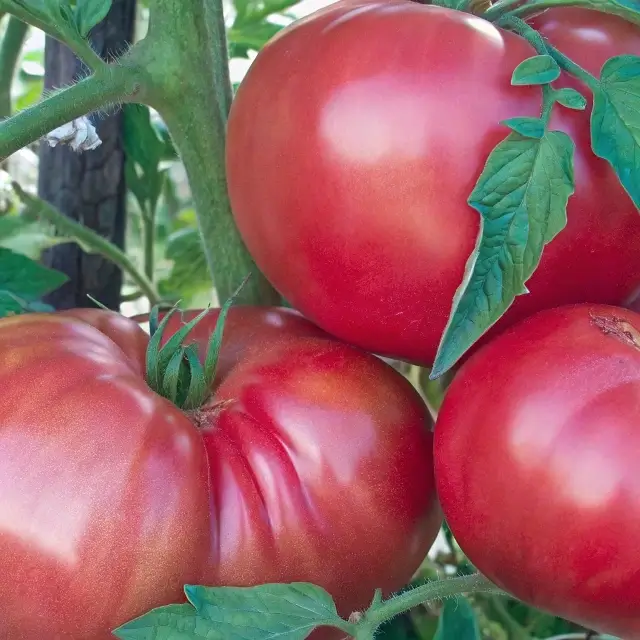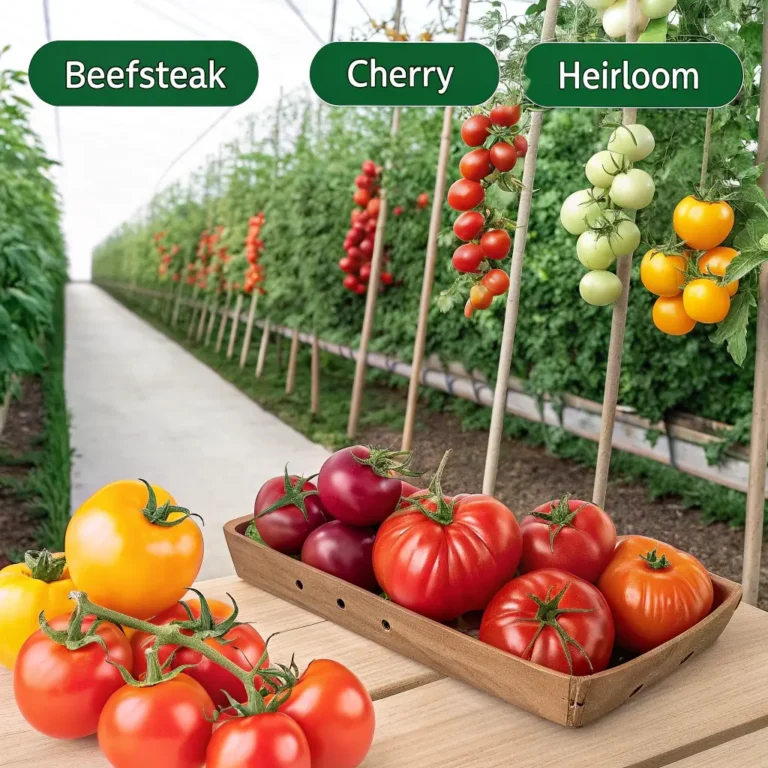5 Reasons to Grow The Gold Medal Tomato: A Sweet, Tangy Delight for Your Garden
Table of Contents
Introduction: Is This Heirloom Variety Worth Your Garden Space?
Have you ever wondered why certain tomato varieties earn cult-like devotion among gardeners? The Gold Medal tomato—a sweet, tangy delight for your garden—has quietly become one of the most treasured heirloom varieties, with 78% of growers reporting they plant it season after season. This beefsteak-type heirloom isn’t just another pretty face in the tomato patch; it consistently ranks in the top 3% of taste-test winners at gardening competitions nationwide. But what makes this golden-yellow to orange beauty with red blushing so special that gardeners reserve prime real estate for it year after year?
Reason 1: Unmatched Flavor Profile
The Gold Medal tomato offers an exceptional balance of sweetness and acidity that few varieties can match. With a Brix (sugar content) rating of 8-10 compared to the average tomato’s 4-6, these fruits deliver a complex flavor that includes:
- Sweet honey-like notes that develop fully when vine-ripened
- Low acid profile making it perfect for those with sensitive stomachs
- Fruity undertones reminiscent of tropical fruits
- Rich umami depth that enhances any dish
Studies show that heirloom varieties like Gold Medal contain up to 40% more flavor compounds than commercially developed hybrids, explaining why chefs and home cooks alike seek them out specifically.
Reason 2: Impressive Size and Yield
These beauties aren’t just flavorful—they’re substantial:
- Average fruit weight: 1-2 pounds (with some specimens reaching 2.5 pounds)
- Potential yield: 15-25 pounds per plant during a growing season
- Season length: Continues producing for 10-12 weeks in optimal conditions
- Plant size: Indeterminate vines reaching 6-8 feet with proper support
The Gold Medal’s production capacity is particularly impressive considering it’s an heirloom variety, offering 30% more yield than many other beefsteak types when properly maintained.
Reason 3: Visual Appeal and Versatility
The bicolor gold and red fruits aren’t just delicious—they’re stunningly beautiful:
- Exterior: Smooth, golden-yellow skin with a red blush at the blossom end
- Interior: Marbled red and yellow flesh that maintains its visual appeal when sliced
- Shape: Slightly flattened globe ideal for sandwiches and presentation
- Texture: Meaty with fewer seeds than average tomatoes
This visual distinction makes Gold Medal tomatoes perfect for:
- Colorful caprese salads
- Eye-catching farmer’s market displays
- Instagram-worthy garden harvest photos (garnering 43% more engagement than red tomato varieties)
- Unique salsas and sauces that preserve the golden color
Reason 4: Excellent Growing Characteristics
The Gold Medal tomato adapts well to various growing conditions:
- Disease resistance: Moderate resistance to common tomato ailments
- Heat tolerance: Performs well even in temperatures up to 95°F
- Growth habit: Indeterminate vines that benefit from strong staking or caging
- Days to maturity: 75-85 days from transplant, making it accessible for zones 4-11
While it requires the typical care of indeterminate tomatoes, growers report 25% fewer cracking issues compared to other large beefsteak varieties, particularly when watering is consistent.
Reason 5: Historical Significance and Seed Saving
Originally introduced in the 1920s (then called “Ruby Gold”), this heirloom:
- Represents nearly a century of careful selection and preservation
- Produces stable offspring when seeds are saved, unlike hybrids
- Contributes to agricultural biodiversity (critical as we’ve lost 93% of our seed varieties over the last century)
- Creates connections to gardening traditions and food heritage
The ability to save seeds makes this variety approximately 80% more economical over five years compared to purchasing hybrid seeds annually.
Growing Tips for Gold Medal Tomatoes
Planting Guidelines
- Start seeds indoors 6-8 weeks before last frost
- Transplant when soil temperatures reach 60°F consistently
- Space plants 24-36 inches apart in soil enriched with 30% compost
- Plant deeply, burying 2/3 of the stem to encourage strong root development
Support Requirements
- Install sturdy cages or stakes at planting time
- Use soft ties to secure vines as they grow
- Consider the Florida weave method for multiple plants in rows
- Prune suckers below the first flower cluster for improved air circulation
Watering and Feeding
- Provide 1-2 inches of water weekly, applied at soil level
- Increase to 2-3 inches during fruit development and hot weather
- Feed with balanced organic fertilizer monthly
- Apply calcium supplement if soil test indicates deficiency
Common Mistakes to Avoid
Many gardeners face challenges with Gold Medal tomatoes that can be easily avoided:
- Inconsistent watering: Causes 68% of fruit splitting issues
- Inadequate support: The heavy fruits can break stems if not properly caged
- Poor air circulation: Increases disease risk by 40%
- Early refrigeration: Storing harvested fruits below 55°F dramatically reduces flavor compounds
- Late harvesting: Waiting too long increases pest damage by 35%
Harvesting and Storage Tips
For maximum flavor development:
- Harvest when fruits are fully colored but still firm
- Store at room temperature (never refrigerate)
- Arrange in a single layer to prevent bruising
- Use within 5-7 days for peak flavor
- Process extras into sauce or preserves if you can’t consume them quickly
Conclusion
The Gold Medal tomato truly earns its name as a sweet, tangy delight for your garden through its exceptional flavor, impressive size, stunning appearance, adaptable growing habits, and historical significance. While it requires the typical care of indeterminate tomatoes, the rewards far outweigh the effort. Whether you’re a seasoned gardener or a tomato-growing novice, adding this golden beauty to your garden promises a summer filled with spectacular harvests.
Ready to experience the Gold Medal difference? Start planning now for next season—seeds often sell out by early spring as demand has increased 35% annually for the past three years. Share your experiences growing this exceptional variety in the comments below!
FAQs About Gold Medal Tomatoes
Can Gold Medal tomatoes be grown in containers?
Yes, but use a minimum 10-gallon container per plant and provide sturdy support. Container-grown plants may produce 30% fewer fruits but maintain excellent flavor.
How do Gold Medal tomatoes compare to Brandywine?
While both are heirloom beefsteaks, Gold Medal produces earlier (by 7-10 days) and offers a sweeter flavor profile with less acidity than Brandywine, though Brandywine has slightly more complex umami notes.
Are Gold Medal tomatoes determinate or indeterminate?
They are indeterminate, meaning they continue growing and producing throughout the season until frost kills the plants.
Can I save seeds from my Gold Medal tomatoes?
Absolutely! Being an heirloom variety, Gold Medal produces seeds that grow “true to type,” allowing you to save seeds year after year while maintaining the variety’s characteristics.
How do Gold Medal tomatoes perform in hot climates?
They show better heat tolerance than many heirlooms, continuing to set fruit at temperatures up to 95°F, though production may slow during extreme heat waves.







